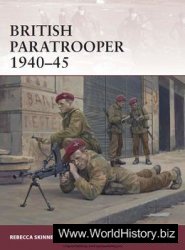The structure of the book is central to its narrative.9 It constructs the past from a ‘nonmale’ non-canonical perspective on several levels: by the themes discussed, by the way the discussion is framed, by the internal agendas of chapters, by its order and organisation and by the narrative itself. The chapter themes are not typical of ‘normal’ histories: family, sexuality, education, work, religion, citizenship, war and peace, culture and leisure. In contrast, for example, Jeremy Black’s Eighteenth-Century Europe certainly includes a short section on women and children (and often these are taken together, further imbedding the notion that women are mothers - though perhaps 20 per cent never are), but his other chapters are far more typical of history.10 The order of the chapters in this book similarly reflects the alternative universe of the female. We begin with the family because, as Lynn Abrams writes, family is ‘the very substance and texture of women’s daily lives’ (p. 18). Continuing with sexuality and then education, the book places aspects of female identity firmly in the centre. Chapters on work, religion, citizenship and war develop these female identities, exploring more fully how women operate outside of the personal, indeed how ‘women go public’ so to speak. The final two chapters, situated in leisure and culture, build on the personal and the political in addressing issues of professionalism and amateurism and the complexities of what engaging in culture meant to women. Thus, the organisation of the book and its main agenda deliberately concentrates on women’s experiences and their own understandings of their worlds. It places people as social actors ‘front and centre’. This is a history written from the inside out, not a history written on a macro-level where people disappear. As Lynn Abrams argues, structural approaches to the family played down individual experience, while from demographic studies, Alison Mackinnon commented that one could easily conclude that it was regions that had babies rather than people.11 Similarly studies of economic development project an explanatory framework that seems like inexorable forces floating free from the people who shape them.
Of course, women’s lives do not fit neatly into ‘themes’, time or space; they are organic, fluid and certainly not of a coherent piece. Thus readers will necessarily find that the chapters and discussions overlap. This reflects the ‘messiness’ of women’s lives but, more importantly, allows readers to make connections between aspects of women’s experience. In particular, issues of ideology and its implementation through law, state policies, literature and culture form underlying themes. Gender, class and ethnicity inform all of the chapters, as do women’s relationships, whether personal or ‘external’. The interaction between women, ideology and female agency, the way they engaged with patriarchal and gendered structures and systems, and how they carved out their identities and spaces within these inform much of the writing. The interconnectivity of the chapters is important, and was important to us as we wrote. Thus there are links between transnational education projects and feminist reform movements; discourses on sexuality inform the ways women were regarded at home and at work; discourses on family life have important implications for work patterns and the ways women shaped their religious experiences; political women figure in the examination of war and peace; while links between leisure, culture and education also translate into the ways women negotiated public and private discourses.
The book is not just about adding women; it intends to reshape the narrative. The history of women is necessarily part of a much larger story of the interaction of gender, class, ethnicity, the construction of knowledge and the complex long-term interrelationship between the internal world of the family and the external functioning of local, national and international economies. The past looks different when written through women’s eyes. This is the point Maxine Berg and Pat Hudson make about reconstructing the industrial revolution: the pace and shape of the industrial revolution looks very different indeed when data on women’s work and women’s industries are included.12 Throughout the book, we frame the discussion in a discourse that questions the construction of the dominant narrative. Thus Karen Hunt argues that politics is more than parliamentary politics and seeking governmental power. She shows that women changed the polity both in practice and in the way it was conceptualised. Tammy Proctor similarly asks us to rethink what leisure meant when women’s activities are factored in. She asks whether the suffrage volunteer sewing banners was working or enjoying leisure. Writing on working women, I expand the notion of work to embrace a wide range of women’s activities, countering the emphasis on waged work and on visible and ‘countable’ work and putting the ‘mill girls’ into perspective. Jane Potter points to the doubly masculine perspective on war and peace; that is, ‘men writing about male actors, men valorising the suffering of soldiers, and men seeking to learn lessons for future military strategy’. Thus, she demonstrates how once ‘women are added to the narratives of war, the interpretation of that narrative changes irrevocably’ (p. 261). So, this history argues that not only does women’s history matter but, by asking different questions, visualising alternative realities, it contributes to rewriting the dominant narrative, valuing women’s and men’s lives.
This history of European women is situated in the feminist historiography of the past thirty years. With new approaches and methods of historical research, detailed analysis at regional and local level has illuminated social, cultural and economic change and has helped rebuild a more accurate picture of the gendered character of the past - and of writing about the past. Numerous edited collections, whether reprints from earlier publications or as specific collections addressing a common theme, have been especially valuable in addressing specific areas of research and in identifying new trends, sources and readings of women’s past.13 Surveys of European women,14 and on topics or themes, such as family, work or feminism15 have begun to modify and revise some of the assumptions concerning the place of women in history and the impact of women on the process of history. This volume seeks to continue that process of moving beyond ‘reclamation’, to provide a holistic approach to women’s history, incorporating constructions of gender. Sian Reynolds has also pointed out the ways that women’s history has challenged and ‘de-fetishised’ the archives, by asking about collection policies on the one hand and about the language and texts of the documents themselves on the other.16 The range of sources that underpin the chapters are illustrative of the shifts in how we study women’s past. For example, anthropological and linguistic approaches have changed the sorts of questions historians ask as well as shifting their sources. In education, for example, private materials, such as diaries and letters, have leavened the early emphasis on studying rulebooks and school records. A study of women and culture, both popular and high, requires an ‘excursion’ into interdisciplinary territory; literature opens up the realms of women and war, and the work of sexologists sheds light on some of the twilight discourses of sexuality. The tradition of continental European ethnography provides important insights into family and workplace, as does material culture, while studies of consumption shift the narratives across the chapters.




 World History
World History









